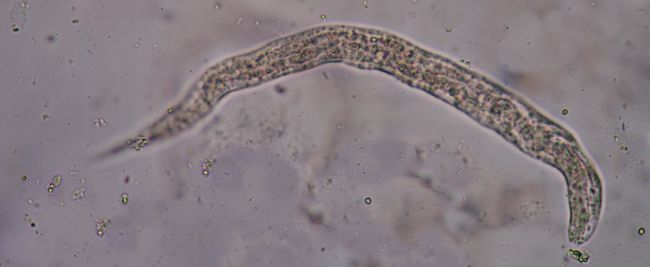
The most common form of parasite that is found in dogs is the roundworm. Though they primarily only affect cats and dogs, roundworms can also negatively impact the eyes, lungs, and hearts when contracted by humans. Anytime an individual has contact with surfaces potentially contaminated with animal feces (such as lawns, gardens, tanbark, and sand, etc.) they are at risk. These nuisances often resembling earth worms, lodge themselves in the animal’s liver, lungs and finally travel to the intestines. Roundworms are insidious parasites because they replicate quickly, laying from 85,000-100,000 eggs a day. When an animal has been diagnosed with roundworm, immediate medical attention is necessary.
Causes
Like the hookworm, roundworms are most often passed through the mother dog or cat’s milk and given to her young, or while the babies are growing in her bodies. For this reason, most vets emphasize the importance of de-worming animals while the dogs are still puppies, in case they have previously be infected. Dogs and cats can also get roundworms through the vermin that they hunt or ingest. If a cat or dog is a regular mouser, he should be checked for roundworm.
Symptoms
Animals that suffer from roundworm will show signs of illness including dull coats, weight loss, digestive issues (like vomiting and diarrhea), or coughing when the worms invade the lungs. However, one of the most obvious signs of a roundworm infestation, is a pot-bellied or swollen abdomen. Evidence of roundworms is also apparent in fecal matter, where remnants of roundworms themselves can be seen.
Treatments
Most puppies receive de-worming treatment at an early age to ward off any unwanted parasites they might have caught from their mother. Initial de-worming treatments must be augmented by numerous follow-up doses of medication as well, to ensure that no additional larvae has begun to thrive. Adult dog and cats should also be given medication every 6-12 months (averaging twice a year) so that any serious infection might be terminated before severe damage is done to the animal’s organs.

